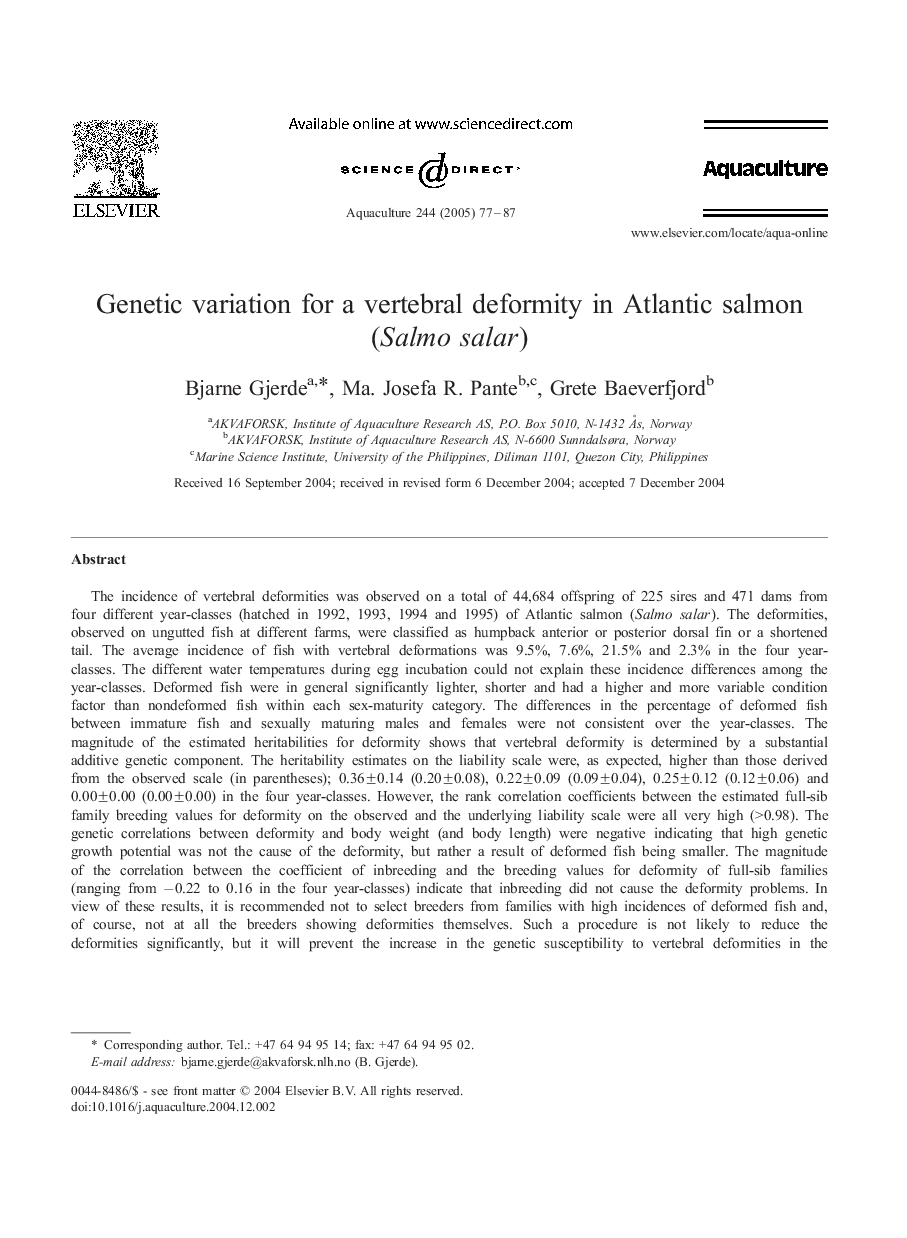| Article ID | Journal | Published Year | Pages | File Type |
|---|---|---|---|---|
| 8974901 | Aquaculture | 2005 | 11 Pages |
Abstract
The incidence of vertebral deformities was observed on a total of 44,684 offspring of 225 sires and 471 dams from four different year-classes (hatched in 1992, 1993, 1994 and 1995) of Atlantic salmon (Salmo salar). The deformities, observed on ungutted fish at different farms, were classified as humpback anterior or posterior dorsal fin or a shortened tail. The average incidence of fish with vertebral deformations was 9.5%, 7.6%, 21.5% and 2.3% in the four year-classes. The different water temperatures during egg incubation could not explain these incidence differences among the year-classes. Deformed fish were in general significantly lighter, shorter and had a higher and more variable condition factor than nondeformed fish within each sex-maturity category. The differences in the percentage of deformed fish between immature fish and sexually maturing males and females were not consistent over the year-classes. The magnitude of the estimated heritabilities for deformity shows that vertebral deformity is determined by a substantial additive genetic component. The heritability estimates on the liability scale were, as expected, higher than those derived from the observed scale (in parentheses); 0.36±0.14 (0.20±0.08), 0.22±0.09 (0.09±0.04), 0.25±0.12 (0.12±0.06) and 0.00±0.00 (0.00±0.00) in the four year-classes. However, the rank correlation coefficients between the estimated full-sib family breeding values for deformity on the observed and the underlying liability scale were all very high (>0.98). The genetic correlations between deformity and body weight (and body length) were negative indicating that high genetic growth potential was not the cause of the deformity, but rather a result of deformed fish being smaller. The magnitude of the correlation between the coefficient of inbreeding and the breeding values for deformity of full-sib families (ranging from â0.22 to 0.16 in the four year-classes) indicate that inbreeding did not cause the deformity problems. In view of these results, it is recommended not to select breeders from families with high incidences of deformed fish and, of course, not at all the breeders showing deformities themselves. Such a procedure is not likely to reduce the deformities significantly, but it will prevent the increase in the genetic susceptibility to vertebral deformities in the population. Further efforts should be made to explore the various aetiological causes of the deformities before further critical choices are made.
Related Topics
Life Sciences
Agricultural and Biological Sciences
Aquatic Science
Authors
Bjarne Gjerde, Ma. Josefa R. Pante, Grete Baeverfjord,
